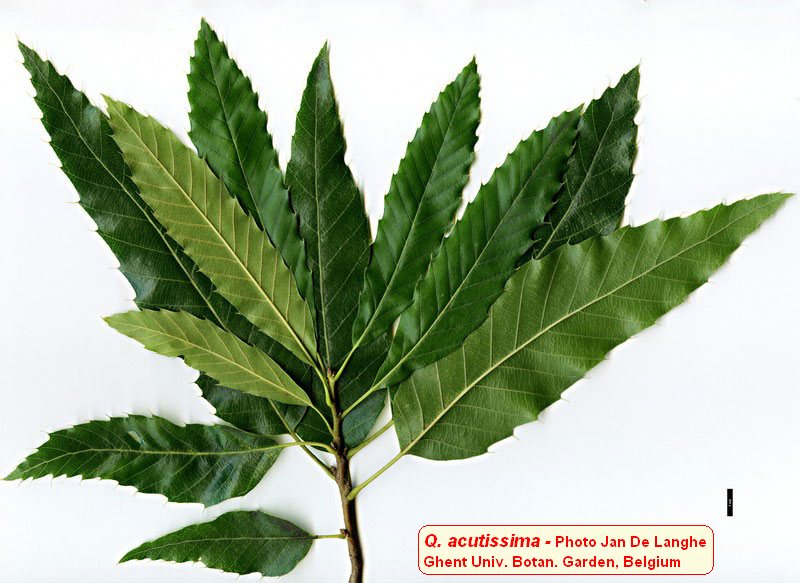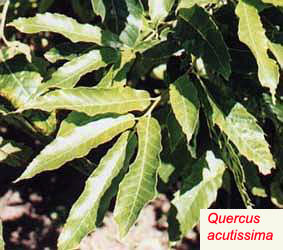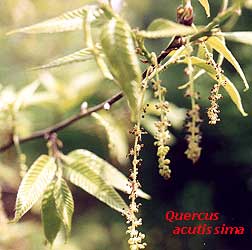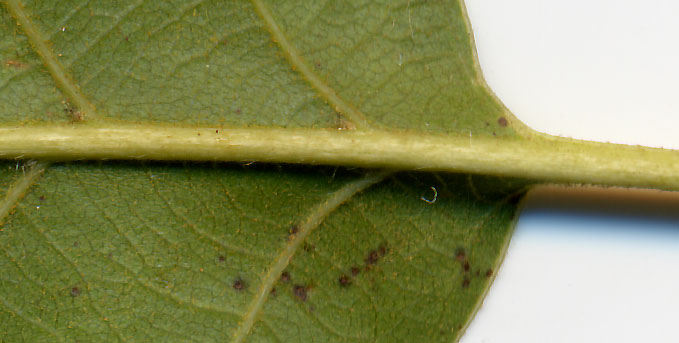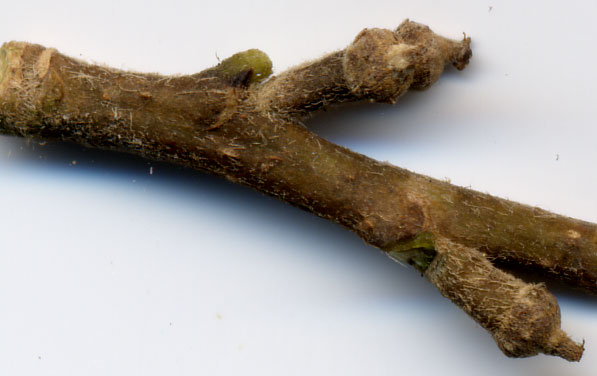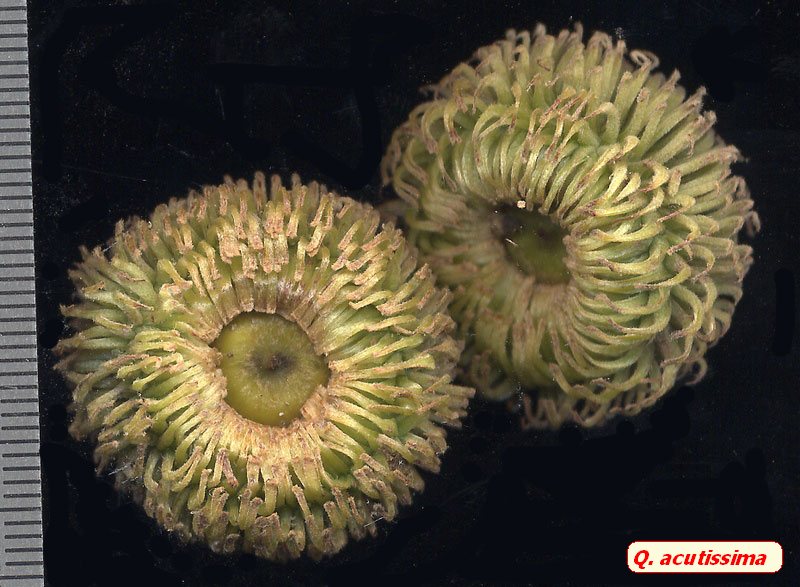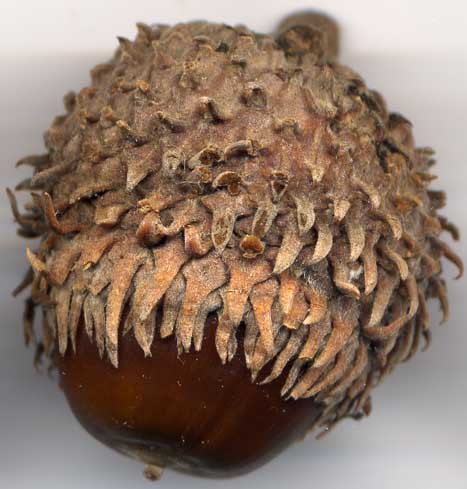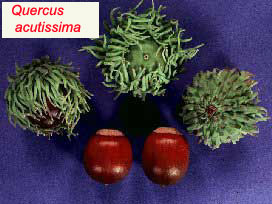| Quercus acutissima | |
| Author | Carruth. 1861 J. Linn. Soc., Bot. 6: 33 1862. |
| Synonyms | acutissima var. depressinucata H. Wei Jen
& R.Q.Gao 1984 acutissima var. septentrionalis Liou 1936 acutissima var. lioui Kozlov 1933 bombyx K.Koch 1873 castaneifolia Morrison lunglingensis Hu 1951 serrata S. & Z. 1846 not Thunb. nor Carruthers uchiyamana Nakai 1914 |
| Local names | Japanese chestnut oak ; saw-toothed oak ; kunugi ; ma li ; |
| Range | Japan , North China , Korea, Himalaya,
Cambodia, Myanmar, Vietnam, Thailand ; from 100 to 2200 m; introduced in Europe in 1862 ; |
| Growth habit | 2 to 15 m tall (reaches 30 m? with trunk to 1 m in diametre) ; pyramidal crown, becoming rounded and loose ; |
| Leaves | 8-15 cm long, 4-6cm wide ; marcescent ; entire, margin with 10-20 pairs of short teeth, long bristle-tipped; lustrous green above, dull and paler beneath; few hairs on both surfaces; base rounded or coarsely cuneate; long pointed apex; 12-20pairs of parallel veins; 1 to 2 cm long, fluted petiole, rusty coloured in autumn. |
| Flowers | male flowers on yellowish, pendulous and 10-15 cm long catkins; appearing at the end of spring; female flowers inconspicuous. |
| Fruits | acorn 2.5 cm long, 1.5-2 cm in diameter, hidden in the long, curved, pubescent scales of the hemispherical cup; solitary or paired; subglobular, with depressed apex; enclosed for 1/2 in the 2 to 4 cm wide cup including long recurved scales; maturing in 2 years ; |
|
Bark, twigs and |
dark grey bark, furrowed on the young trunks, scaly and almost corky on the old ones; pale green twig, becoming chestnut brown, pubescent at first then hairless; 2 to 3 cm long and pointed buds, with imbricated scales, grey brown, with a greenish wooly pubescence; |
| Hardiness zone, habitat | prefers well drained and lime-free soils ; but very adaptable; hardy, but prefers moist and warm sites; fast growing when young; |
| Miscellaneous | -- A. Camus : n° 132 ;
-- Sub-genus Cerris, Section Cerris, Sub-section Campylolepides (with chenii and variabilis); -- Rare ; -- No cultivar ; no serious deseases; propagation by seeds; -- The subspecies roxburghii (= Q.roxburghii Endl.) described by Camus is in fact a species of the Castanopsis genus (= Castanopsis indica) ; |
| Subspecies and varieties |
3 subspecies : |
| Pictures |
|
